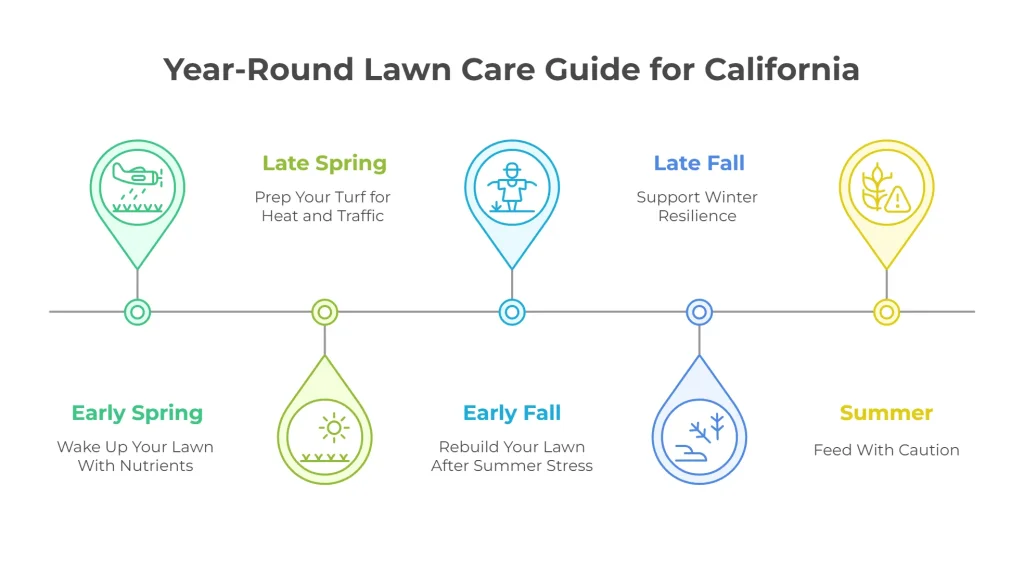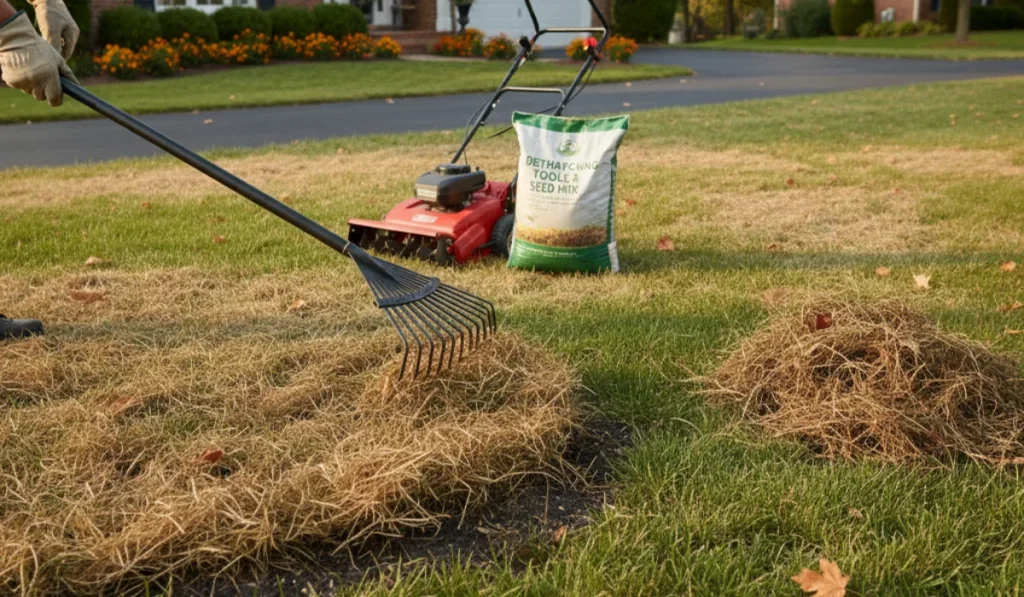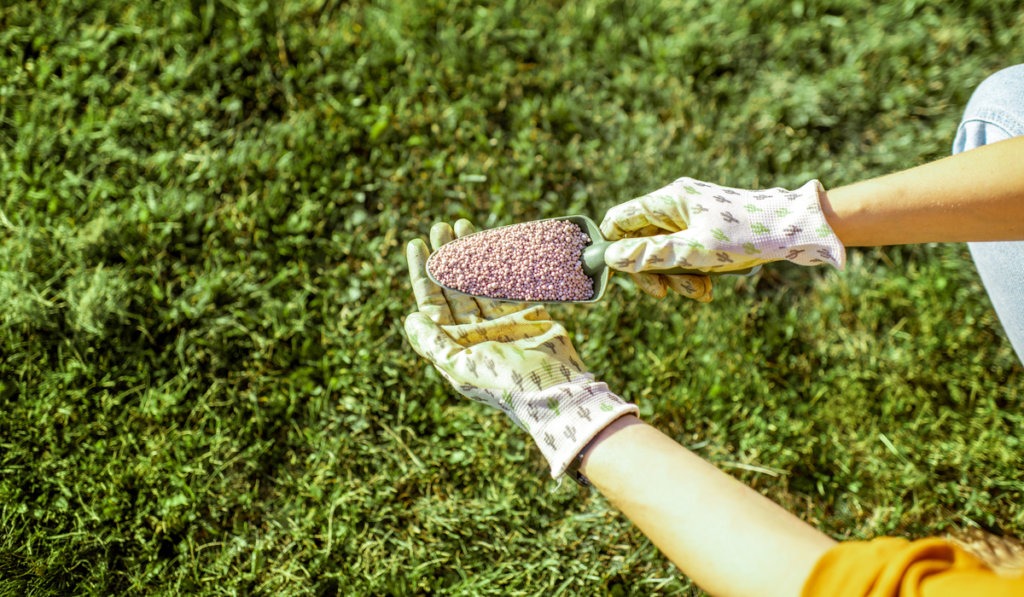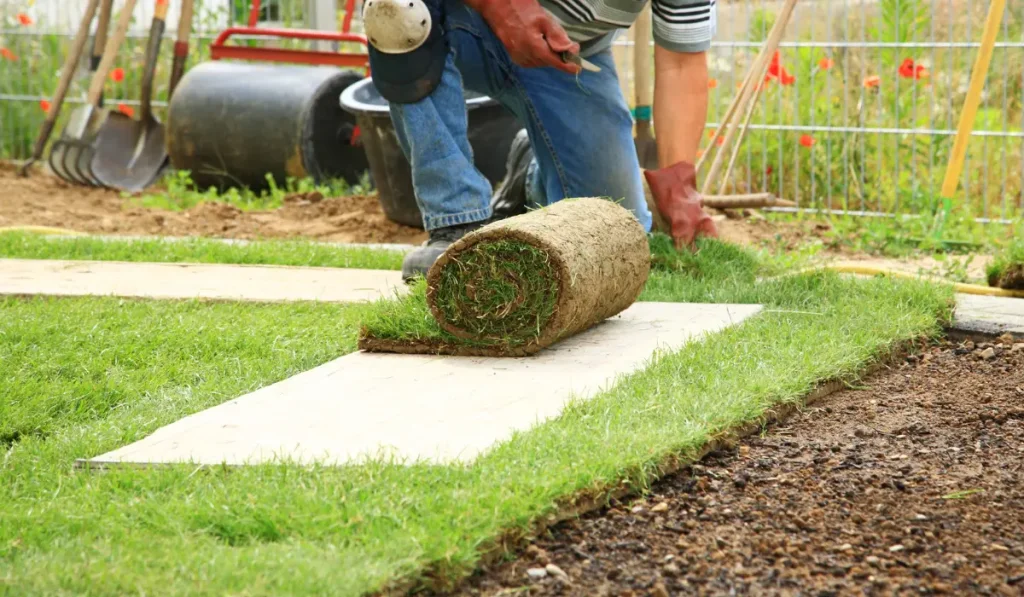If you’re looking for a green lawn in California, timing your fertilizer application is just as important as choosing the right type of fertilizer. From foggy coastal neighborhoods to hot, dry inland valleys, the local climate diversity means your lawn care strategy needs to be tailored.
Knowing when to fertilize lawns sets the stage for a healthy lawn year-round. Whether you’re managing sod, bare spots, or a mature yard, having a proper fertilization schedule can support consistent root growth, green-up, and better weed control.
Let’s walk through the best times to fertilize your lawn in California and why it matters.
Key Takeaways
- Early spring is when cool-season grasses wake up and need nutrients to build strong roots for the season.
- Late spring is the best time for fertilizing warm-season grasses as they begin growing during warmer weather.
- Early and late fall help cool-season grasses recover, grow new roots, and prepare for winter dormancy.
- Summer fertilizing should be cautious and light, and your lawn care depends on your region and grass type.

Early Spring: Wake Up Your Lawn With Nutrients
In many parts of California, early spring starts as temperatures regularly reach the low 60s. This is the right time to fertilize cool-season grasses like tall fescue, ryegrass, and Kentucky bluegrass, which break dormancy and resume growth.
Spring Lawn Needs
Cool-season lawns benefit from a slow-release fertilizer with balanced nitrogen and potassium. These nutrients drive strong root development, giving your grass a head start on the growing season.
If you’re unsure about the amount of fertilizer, start with a soil test to tailor your lawn fertilizer choices to your soil’s actual needs.
Late Spring: Prep Your Turf for Heat and Traffic
As we move into May, warm-season grasses like Bermuda grass, zoysia, and St. Augustine grass begin their active growth phase. This is often the best time for their first fertilizer application of the year.
Boosting Growth and Durability
Use a granular, slow-release fertilizer to encourage healthy top growth and dense turf.
For cool-season lawns, this may be a good time for a second application if your first was light. Aerate compacted areas beforehand to improve nutrient absorption.
Don’t forget to calibrate your spreader for even coverage. This ensures every square foot receives the right nutrients.
Early Fall: Rebuild Your Lawn After Summer Stress
By early fall, typically September, cool-season grasses bounce back as days cool and moisture returns. This is also a key window for overseeding thin or patchy areas, especially with tall fescue or ryegrass.
Fall Fertilization Details
A lawn fertilizer that’s higher in nitrogen but still includes potassium will help with recovery and prepping your turfgrass for winter. Apply after mowing and make sure the lawn is well-watered.
If you’re also treating for weeds, skip herbicide applications during overseeding. It can interfere with seed germination.
Late Fall: Support Winter Resilience
November is usually the last call to fertilize cool-season lawns.
In Southern California, where lawns can stay green longer, this application helps your grass build carbohydrate reserves for the winter months.
Late Fall Fertilizer Strategy
Select a fertilizer that’s lower in nitrogen and higher in potassium. This helps reinforce the root system and improves disease resistance as your lawn enters dormancy.
It’s also a good time to mulch or compost grass clippings for added organic matter.
Summer: Feed With Caution
Fertilizing in peak summer (June to August) is tricky. Only warm-season grasses should be fertilized during this period, and even then, lightly.
While cool-season grasses can go dormant in extremely hot climates, this is uncommon in most California regions. Instead of dormancy, they may slow their growth. Light feeding may be appropriate if the lawn remains active, but avoid overapplying fertilizer in high heat.
How to Fertilize in Summer
If your warm-season turf shows signs of stress, use a slow-release product at a lower dose. Avoid quick-release fertilizers, as they may burn the lawn under high heat. Water deeply after the fertilizer application to support nutrient uptake.
If you’re using a lawn mower frequently, monitor clippings. Too much buildup can suffocate the lawn and interfere with nutrient delivery.
Special Consideration: Match Fertilization With Your Yard’s Rhythm
A one-size-fits-all fertilization schedule doesn’t work in California.
Homeowners need to consider their microclimate, type of grass, and whether they’re dealing with sod, seed, or established lawns.
In Southern California, warm-season lawns may grow nearly year-round. In contrast, Northern California lawns may need fewer applications.
Don’t just fertilize on autopilot. Instead, pay attention to your grass’s needs.
- Is your lawn thinning out?
- Are there bare spots after heavy use?
- Is it growing too quickly after mowing?
These are all signs that your lawn care may need adjustments.
Frequently Asked Questions
Can I fertilize before rain?
Yes, but only if light rain is expected. Too much rain can wash away nutrients before they soak in. Aim to apply fertilizer when rainfall will help, not hinder, nutrient absorption.
Should I water my lawn before or after fertilizing?
Watering a day before helps prevent root burn, especially in dry soil. After applying granular fertilizer, lightly water to help nutrients soak into the soil unless the label says otherwise.
Does new sod need fertilizer right away?
Yes, applying a starter fertilizer at the time of installation helps support early root development and improves establishment. Look for a fertilizer specifically labeled for new sod or seedlings, typically high in phosphorus, and water thoroughly after application.



